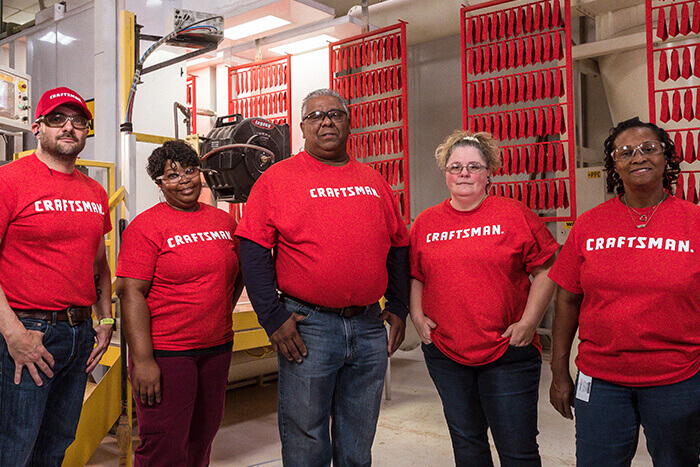
Made in America is good for business.
Here at the Alliance for American Manufacturing, we get asked a lot about where to find specific American-made products — and there’s nothing people seem to ask more about than tools.
Well, we’ve got good news.
Stanley Black & Decker announced this week that it is moving production of Craftsman wrenches, ratchets, sockets and more back to the United States from China. The company will break ground on a 425,000-square-foot facility in Fort Worth, Texas, this summer, and the factory is set to be up and running by late 2020.
About 500 people will be employed at the new $90 million facility, which will utilize robots and fast-forging presses to boost output compared to the older forging machinery now used in China. This will keep production costs in-line with those in China, according to the Wall Street Journal.
While we’d probably celebrate an announcement like this under most circumstances, the news is especially encouraging because it’s not just a single factory going up — it’s part of an entire American-made rebranding of the iconic Craftsman line.
In 2017, Stanley Black & Decker bought Craftsman from struggling retailer Sears, which had offshored production of the tools to China to save cash. As we pointed out last year, Sears had made a terrible, shortsighted decision when they offshored — the quality of the tools noticeably declined, and people stopped buying them.
“We ended up simply buying the brand because the products had been left to de-volve over time to the point where they weren’t high quality, respectable products they once were,” Stanley Black & Decker CEO Jim Loree told TheStreet last year. “They had migrated from made in America to virtually everything being made in China and Mexico. They were in sad shape.”
The tools themselves might have lost their spark, but Stanley Black & Decker recognized the love people had for the brand (or what it used to be). When it bought Craftsman, the company made a strategic decision to bring production back to the United States to recapture some of what made the tools special in the first place.
That effort began in 2018, when the company launched what it dubbed a “refreshed brand identity” of Craftsman that centered around Made in America. More than 1,200 new products were unveiled, and about 40% of Craftsman products were American-made.
The goal was to reshore even more — Stanley Black & Decker is aiming to make about 70% of Craftsman tools in the United States over the next few years, Loree told TheStreet.
But companies often use patriotism to benefit their bottom line, only to abandon their promises later on. That’s why it was so encouraging this week to see this announcement from Stanley Black & Decker.
In addition to the new Fort Worth facility, the company also recently opened its “Advanced Manufacturing Center of Excellence” in Connecticut, which houses a team of about 50 industry experts who work on advanced manufacturing technologies and workforce development efforts.
Stanley Black & Decker operates about 30 manufacturing facilities in the United States, making power tools in North Carolina, tool chests and rolling cabinets in Missouri, tape measures in Connecticut and utility knives in South Carolina.
It’s worth pointing out that Stanley Black & Decker isn’t investing so much in American manufacturing out of the goodness of its corporate heart — it is a Fortune 500 company, and this is a strategic business move.
As the Wall Street Journal notes, it joins companies like Whirlpool and Caterpillar in bringing back production to more automated factories in the United States, with the strategy of making products where people buy them. Craftsman is still reliant on foreign-made parts for some of its tool components, although Loree told the WSJ that he is ready to ship suppliers out of China if a trade deal between the United States and China isn’t reached.
But overall, it appears Stanley Black & Decker’s decision to double-down on U.S. production is paying off — the company projects the brand will hit $1 billion in revenues by 2021.
